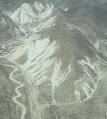Why the US Should Care about Haiti (Part 2)
 In getting Haiti to where it is today, it has had many internal and external actors. There is, of course, the horrific toll slavery took upon the Taino Indian population (eradicated by colonizers by the late 17th century) and blacks taken from West Africa to replace them. In 1825, Haitian President Jean-Pierre Boyer conceded to French demands to pay reparations for the property and investment colonizers had lost due to Haitian independence. Boyer, afraid of invasion, agreed. This sum, which has been valued at more then $21 billion in today’s money, crippled Haiti’s economy as it stripped the countryside in order to make payments.
In getting Haiti to where it is today, it has had many internal and external actors. There is, of course, the horrific toll slavery took upon the Taino Indian population (eradicated by colonizers by the late 17th century) and blacks taken from West Africa to replace them. In 1825, Haitian President Jean-Pierre Boyer conceded to French demands to pay reparations for the property and investment colonizers had lost due to Haitian independence. Boyer, afraid of invasion, agreed. This sum, which has been valued at more then $21 billion in today’s money, crippled Haiti’s economy as it stripped the countryside in order to make payments.
Additionally, the United States has had a fair hand in Haiti’s progress. As early as the turn of the 20th century, German migrants began to settle in Haiti. Five turbulent years in Haiti beginning in 1910 and the onset of the First World War brought grave concern to President Woodrow Wilson. Following the uprising that killed then Haitian President Jean Vilbrun Guillaume Sam, President Wilson, fearing a German invasion to control the Windward Passage, ordered the seizure of the Haitian capital.
On July 27, 1915, US Marines and Navy warships took control of customs houses and all federal administrative institutions. In order to rebuild the nation, US Marines instituted a corvée policy, which stung Haitians as an act of modern slavery. Almost as soon as the occupation began, so too did efforts at organizing revolt begin amongst Haitians.
Mounting tensions between US troops and Haitians inevitably led to incidences involving violence and too often killing. International pressure affected then US President Hoover to establish two commissions to review US policy in Haiti. They criticized the exclusion of Haitians from positions of real authority in the government and that "the social forces that created [instability] still remain--poverty, ignorance, and the lack of a tradition or desire for orderly free government. (Wikipedia.com) Hoover ordered the removal of troops from Haiti in 1934, marking the longest occupation of another sovereign state by the US.
In 1978, Haitian pigs were diagnosed with Asian Swine Flu and, at the guidance of the United States, were eradicated to prevent the spread of the disease to the Dominican Republic and the United States. The pig in Haiti has historically constituted the peasant bank, where in the event of a family emergency, i.e. funeral, illness, etc., a pig could be quickly sold and the money put use. In the early stages of this program no efforts were made to compensate farmers for their loss. Only after incredible hardship and increasing pressure did formal tallies evolve. But Haitian’s natural distrust of official lists made many wary, and attempts to work retroactively recreating the list were only met with deception as farmers sought an easy way to lift themselves from abject poverty.
The eradication program, although not widely criticized, was still a devastating blow to innumerable farmers. For more information on the swine program, click here.
These instances are of particular note to the current economic situation in Haiti. They United States has had a heavy hand in Haiti's politics throughout its history. Let me point out, because of racism, that it was not until 1862, after almost 60 years of independence, that the United States recognized Haiti as a sovereign state.
Robert Miller
Haiti Innovation
Add new comment